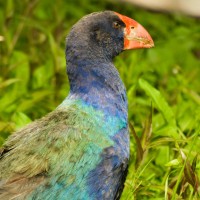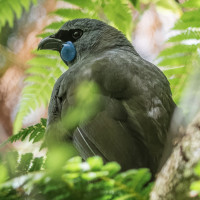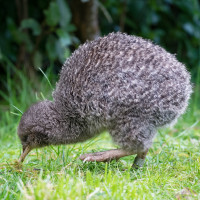Beskrivning
The 22-hectare island sanctuary Tiritiri Matangi has been extensively reforested and is now pest-free thanks to the dedication of its volunteers. Many rare and endangered species (birds, reptiles, and plants) have been reintroduced successfully. The thriving population of endemic birds - you'll hear a constant chorus of bird song during your visit - makes Tiritiri a great place for birding, both for day trips and overnight stays. You can explore the extensive network of paths on your own or take a guided walk from the wharf up to the Visitor Centre.
The island offers several habitats. At the wharf, where you arrive, and along the beach, you can observe Australasian Gannet, White-fronted Tern, Variable Oystercatcher, and New Zealand's gulls. Up to the ridge through native forest, you can encounter many natives such as Whitehead, North Island Saddleback, and Rifleman; Tiritiri is currently the only place in the Auckland region to see the latter. While they flicker through the whole forest, you can get really close to Hihi (Stitchbird) and New Zealand Bellbird at the many sugar feeders along the tracks. Always listen out for the melancholic song as North Island Kokako so you don't miss them, often up on the ridge. Tiritiri Matangi is also one of the best places to find South Island Takahe; there are several families on the island and one is often hanging out close to the feeder at the visitor centre. In the more open landscape on the Northern end and the Eastern side you can often find Red-crowned Parakeet and New Zealand Fernbird, and there's a good chance to find Spotless Crake and Pāteke (Brown Teal) in the little ponds there.
You can also book an overnight stay in the island's bunkhouse, which will give you the opportunity to surely hear and with some luck also see some Little Spotted Kiwi at night; if you have one, don't forget to bring your red-light torch. Also look out for Morepork, tuatara and geckos. During different times of the year, you will also get the chance to hear the calls of incoming seabirds at night. In general, ask the DoC ranger and volunteers for the currently best spots.
During your ferry trip to the island watch out for Little Penguin in the water and seabirds such as Fluttering Shearwater.
Detaljer
Tillgänglighet
The only public access to Tiritiri Matangi is by ferry from Auckland's CBD and Gulf Harbour and takes about 80 and 25 minutes, respectively. On weekdays you get about 4,5h on the island; on weekends 1-1,5h more. There is a visitor centre on the island, which contains a volunteer-run shop where you can get a hot drink and any information you may need.
You can explore the whole island by foot. There is an extensive network of narrow and wider tracks; some might be a bit muddy and slippery in wet weather. There is also a road from the whaf up to the visitor centre and lighthouse. The road and the main paths should be accessible by wheelchairs. The large round trip (shown on the map) of the island takes can be done in 4h.
With a rainy forecast, don't forget to bring a raincoat as there are no shelters along the track; otherwise, don't forget your sunscreen. At the beach by the wharf you can also go for a swim.
Terräng och habitat
Skog , Strand , Kanjon/klippa , Spridda träd och buskar , Platå , Hav / ocean , VassarFörhållanden
Kulligt , Klippigt , Sumpigt , SandigtRundtur
JaTubkikare behövs?
Kan vara användbartBästa säsong för skådning
Året runtBästa tid för ett besök
Sommar , VårRutt
Bred stig , Smal stigHur ansträngande vandring
Genomsnittlig vandringNås
Till fots , RullstolFågeltorn / plattform
JaExtra information
I would strongly recommend an overnight stay on the island. There are bunk beds in the batch near the lighthouse. The accommodation is run by the Department of Conservation of Aotearoa and stays can be booked online - be advised to book early as the demand is high! See the link below for more info on bookings.


